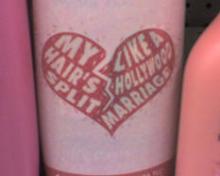The use of harsh hair care practices and acquired hair shaft defects are very common in African American and Hispanic patients. Many studies have previously highlighted the structural damage that hair colors, relaxers, and perms can have on hair. Similar to chemicals, thermal damage can also damage the hair shaft when used over time and at high temperatures (J. Cosmet. Sci. 2004;55:13–27).
In a commentary in the January issue of the Journal of the American Academy of Dermatology, Dr. Paradi Mirmirani discussed the use of ceramic flatirons in Hispanic and African American women and acquired distal trichorrhexis nodosa sustained from repeated thermal injury (J. Am. Acad. Derm. 2010;62:145-7).
Trichorrhexis nodosa is an inherited or acquired hair shaft defect in which the hair is fragile and easily broken; on microscopic examination, filaments of the hair shaft are frayed like a broomstick.
Hot combs have been used for decades to straighten curly hair. Newer flatirons also provide temporary hair straightening, and are widely popular among women of every ethnic background. The uniform temperature distribution among the hair iron tongs allows the heat to temporarily break and reform the hydrogen bonds within the hair shaft.
In the process, the heat causes damage to the hair cuticle resulting in breakage and trichorrhexis nodosa.
Dr. Mirmirani, a dermatologist in Vallejo, Calif., noted that the ceramic coating of the metal in flatirons known as “thermal barrier coating,” decreases the impact of heat on the underlying metal (Annu. Rev. Materials Res. 2003;33:383–417), resulting in better heat distribution, retention, and transfer thought to result in “safer” heating of the hair.
However Dr. Mirmirani commented that although the ceramic-coated flatirons may be more efficient than metal ones, they result in more damage with improper use. Hair becomes dry, brittle, breaks easily and looks more untamed, leading to increased flatiron use to tame uneven hair.
Ceramic flatirons reach temperatures of up to 210° C which damages most hair, particularly chemically or color treated hair. African American hair which is extremely fragile and is often chemically relaxed, sustains significant damage with these high temperatures, and breakage occurs with repeated use of flatirons. Dr. Mirmirani counsels patients with trichorrhexis nodosa to avoid any heat or chemicals, to cut off the damaged hair, and to practice gentle hair care in order to minimize friction that can result in breakage.
Image courtesy Flickr user strangelibrarian (Creative Commons)


